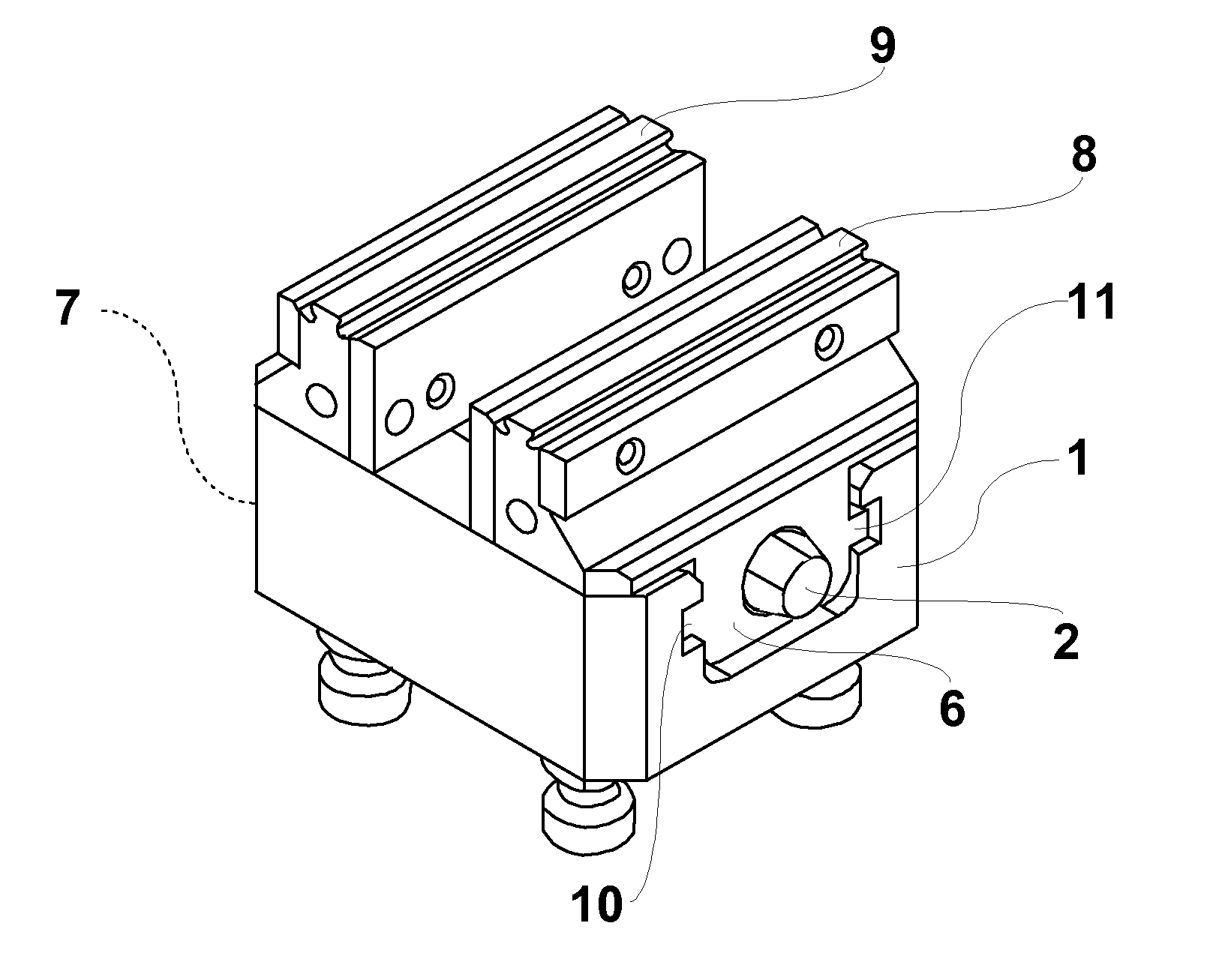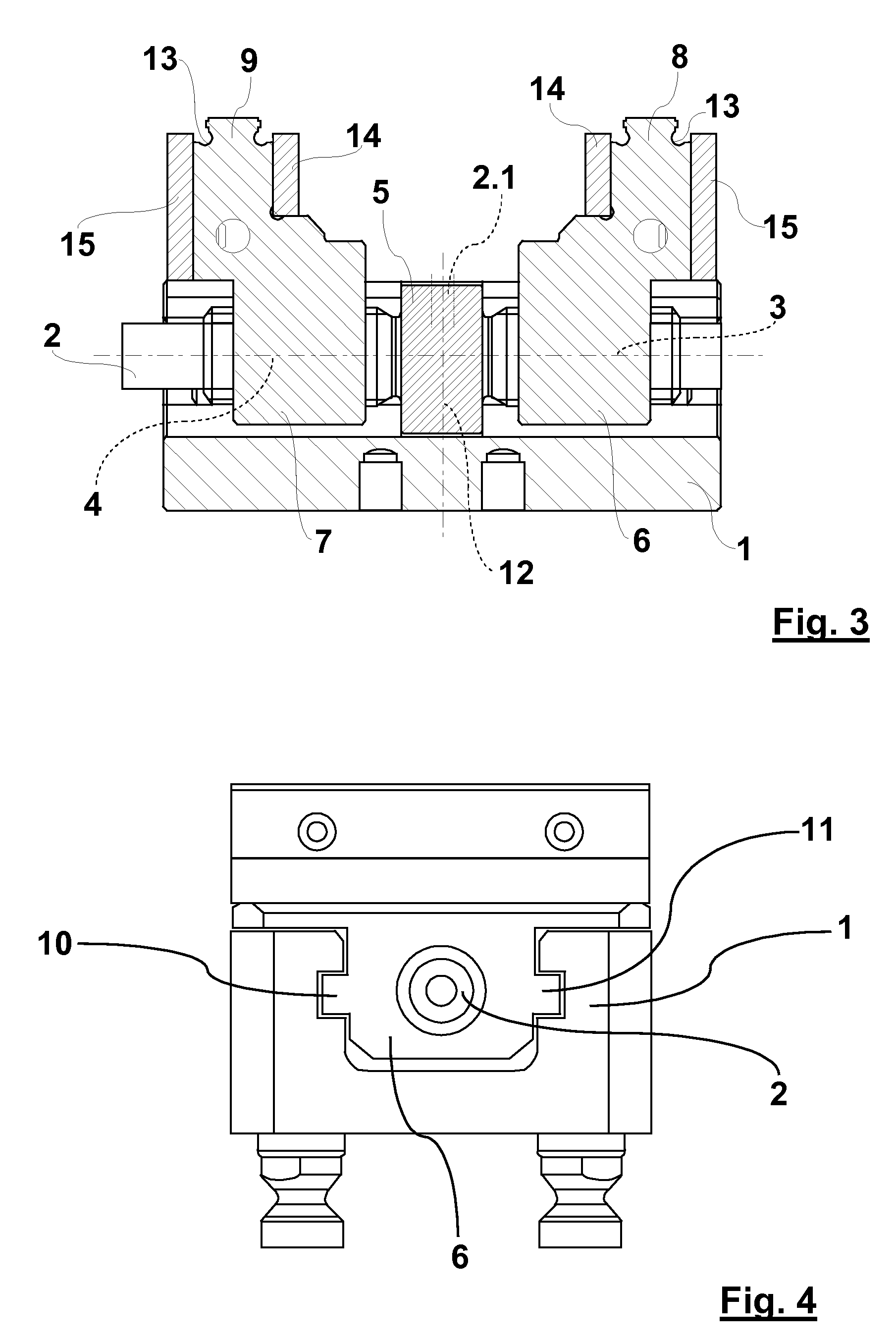Self-centering chuck
a self-centering, chuck technology, applied in the direction of turning apparatus, sleeve/socket joint, vice, etc., can solve the problems of time-consuming and laborious maintenance in view of the required precision, and the gap between the clamping jaws remains very limited, so as to reduce the weight, facilitate the guiding, and reduce the effect of complexity
- Summary
- Abstract
- Description
- Claims
- Application Information
AI Technical Summary
Benefits of technology
Problems solved by technology
Method used
Image
Examples
Embodiment Construction
[0018]Referring to the drawings in particular, the exemplary embodiment shown in FIG. 1 is a self-centering chuck with a basic body 1, for example, one made of aluminum, in which two sliding blocks extending in parallel in the axial direction are arranged. Preferably two slides 6, 7 are provided in the head area with clamping jaws 8, 9 made integrally in one piece, which are provided, according to FIG. 3, for example, with special contours 13, and one side of which has a support surface 14 each and the opposite side of which has an auxiliary stop 15 each. A threaded spindle 2 is provided, according to FIG. 2 and FIG. 3, with a groove 2.1, which is made integrally in one piece between two external threads 3 and 4 and surrounds the circumference of the threaded spindle 2. The threaded spindle 2 can be fixed and locked on the basic body 1 by means of the groove 2.1 with preferably two fastening means 12 arranged opposite each other and is centered via a central piece 5 arranged central...
PUM
 Login to View More
Login to View More Abstract
Description
Claims
Application Information
 Login to View More
Login to View More - R&D
- Intellectual Property
- Life Sciences
- Materials
- Tech Scout
- Unparalleled Data Quality
- Higher Quality Content
- 60% Fewer Hallucinations
Browse by: Latest US Patents, China's latest patents, Technical Efficacy Thesaurus, Application Domain, Technology Topic, Popular Technical Reports.
© 2025 PatSnap. All rights reserved.Legal|Privacy policy|Modern Slavery Act Transparency Statement|Sitemap|About US| Contact US: help@patsnap.com



